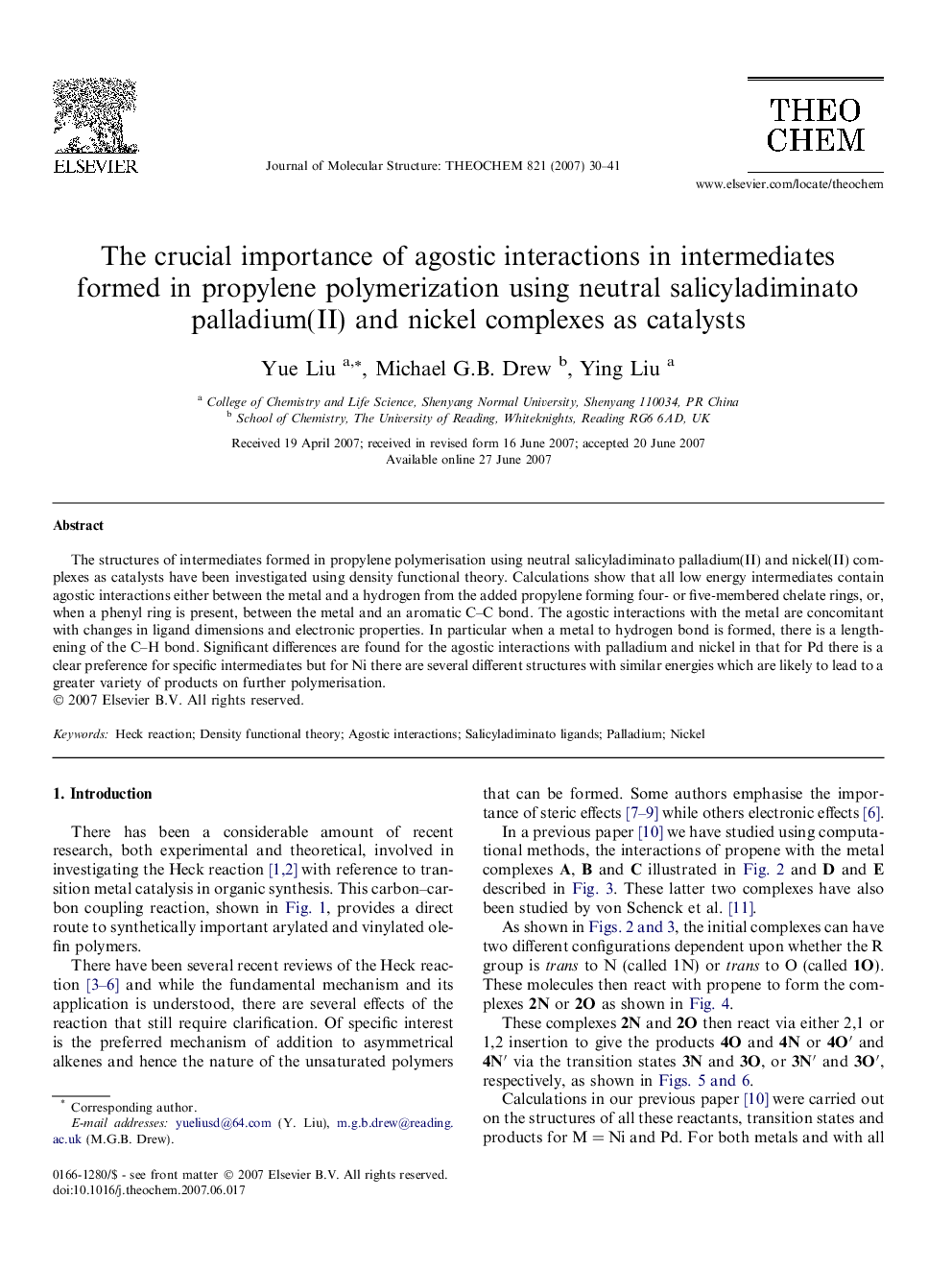| Article ID | Journal | Published Year | Pages | File Type |
|---|---|---|---|---|
| 5417769 | Journal of Molecular Structure: THEOCHEM | 2007 | 12 Pages |
Abstract
The structures of intermediates formed in propylene polymerisation using neutral salicyladiminato palladium(II) and nickel(II) complexes as catalysts have been investigated using density functional theory. Calculations show that all low energy intermediates contain agostic interactions either between the metal and a hydrogen from the added propylene forming four- or five-membered chelate rings, or, when a phenyl ring is present, between the metal and an aromatic C-C bond. The agostic interactions with the metal are concomitant with changes in ligand dimensions and electronic properties. In particular when a metal to hydrogen bond is formed, there is a lengthening of the C-H bond. Significant differences are found for the agostic interactions with palladium and nickel in that for Pd there is a clear preference for specific intermediates but for Ni there are several different structures with similar energies which are likely to lead to a greater variety of products on further polymerisation.
Related Topics
Physical Sciences and Engineering
Chemistry
Physical and Theoretical Chemistry
Authors
Yue Liu, Michael G.B. Drew, Ying Liu,
